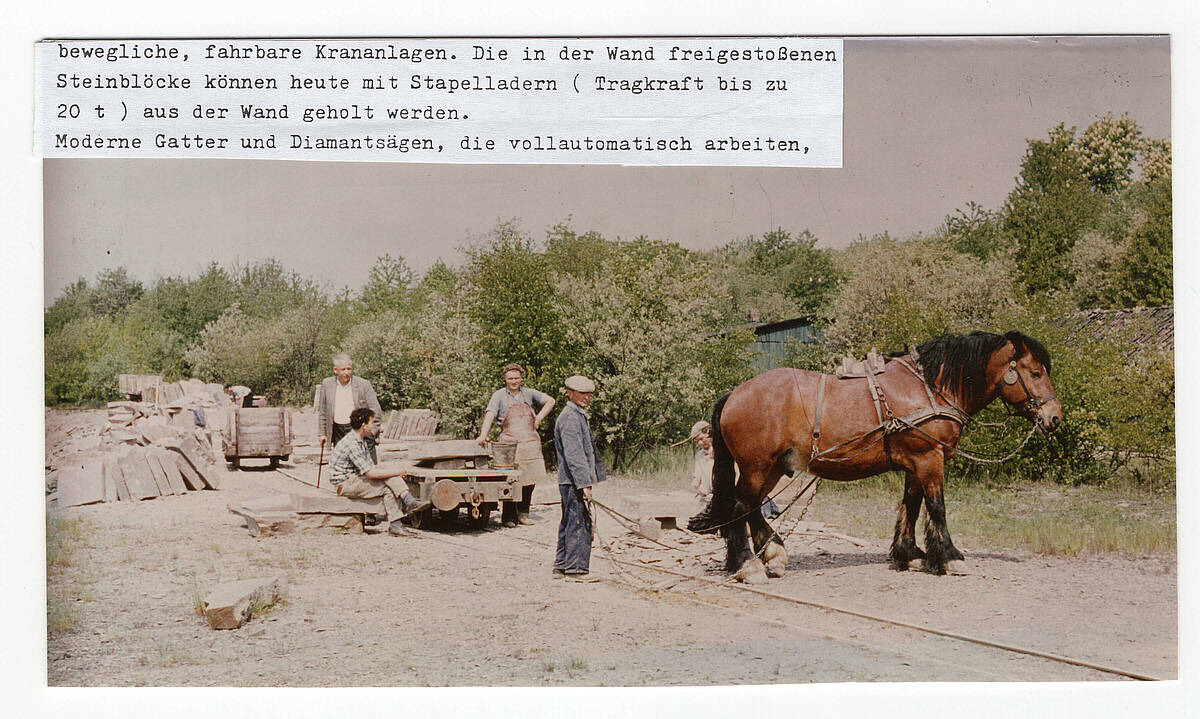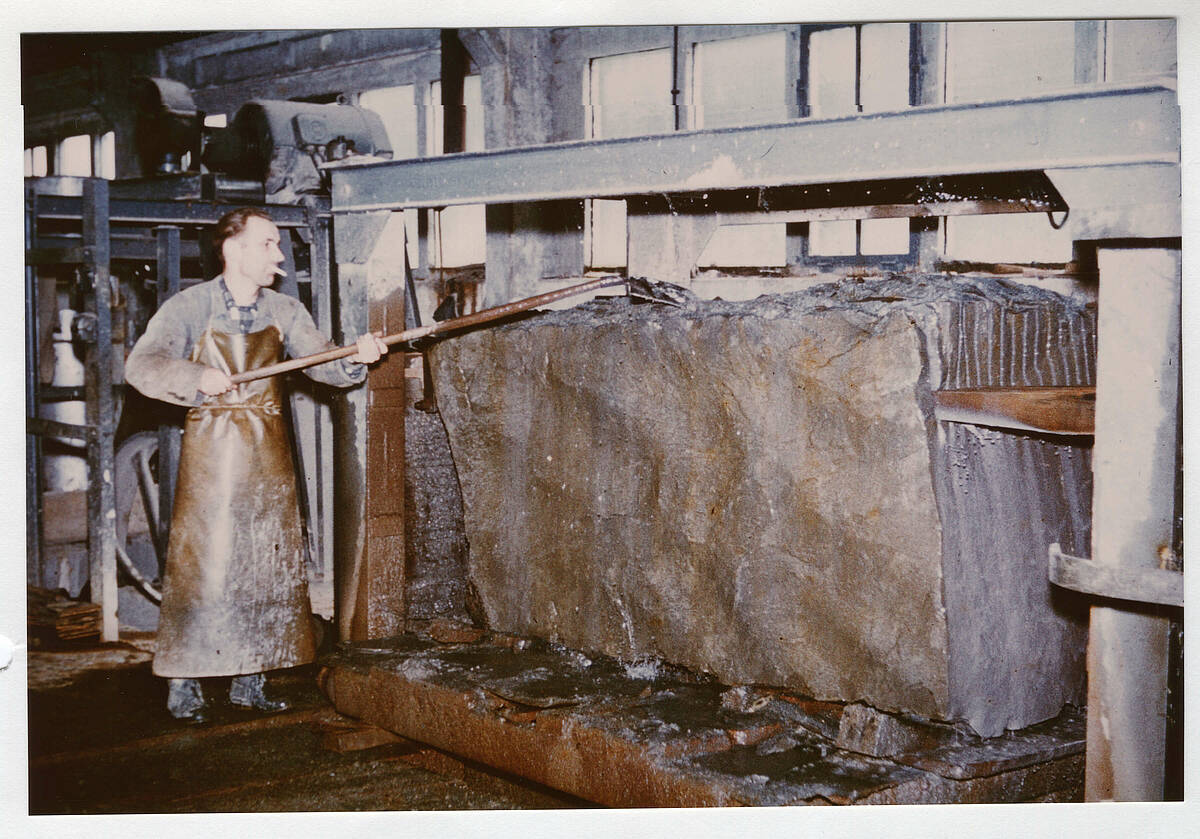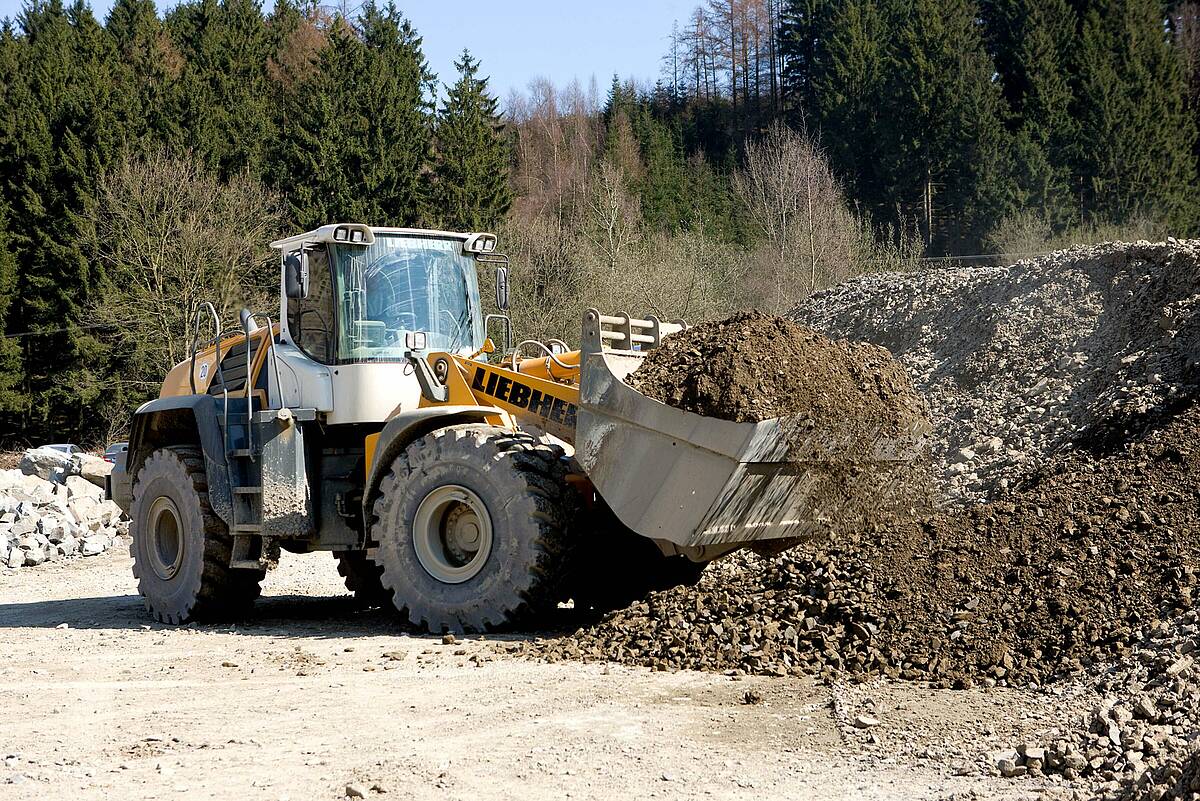Many stonecutters did not return from the Second World War. Others remained in prisoner-of-war camps for years. Nevertheless, work in the quarries quickly resumed. The reconstruction of the destroyed cities and transport routes consumed large quantities of materials. Investments in excavators, wheel loaders and lorries ensured competitiveness against Belgian and Swedish imported stones. At the same time, railway tracks, tipper wagons and mine carts disappeared from the quarries.
In the early 1950s, the German War Graves Commission advocated for a uniform design of military cemeteries with gravestones made of Grauwacke. Around 40,000 of these handcrafted pieces were produced in the quarry of Bergisch-Märkische Steinindustrie at Brungerst. For this piecework, the tippers needed a newly sharpened pointed chisel every 30 minutes.
With the onset of the economic miracle in the 1950s, a growing labour shortage became apparent. In 1954, Basalt AG recruited the first 27 North Italian quarry workers after the Second World War, and others followed. They often lived in wooden barracks or simply equipped dormitories. Later, workers from Yugoslavia, Greece and Turkey were also hired.
In the 1960s, gang saws were introduced, using a mixture of water and fine-grained steel sand to gnaw through the stone at a rate of up to 15 centimetres per hour. Later, more flexible wire saws were used. As a result, increasingly powerful machinery displaced a growing number of workers. Today, massive transport vehicles and computer-controlled processing plants shape the image of modern companies.
![[Translate to English:] Illustration der Seniorchefin](/fileadmin/_processed_/e/e/csm_10-Die_Seniorchefin_3c5640529e.png)


